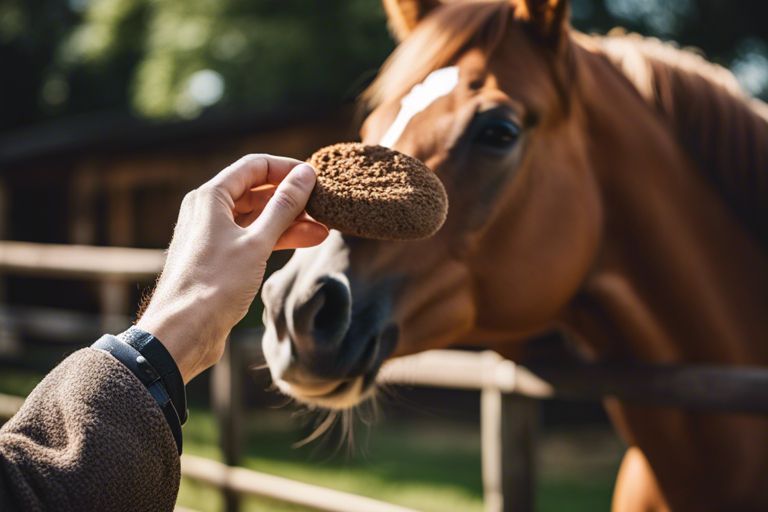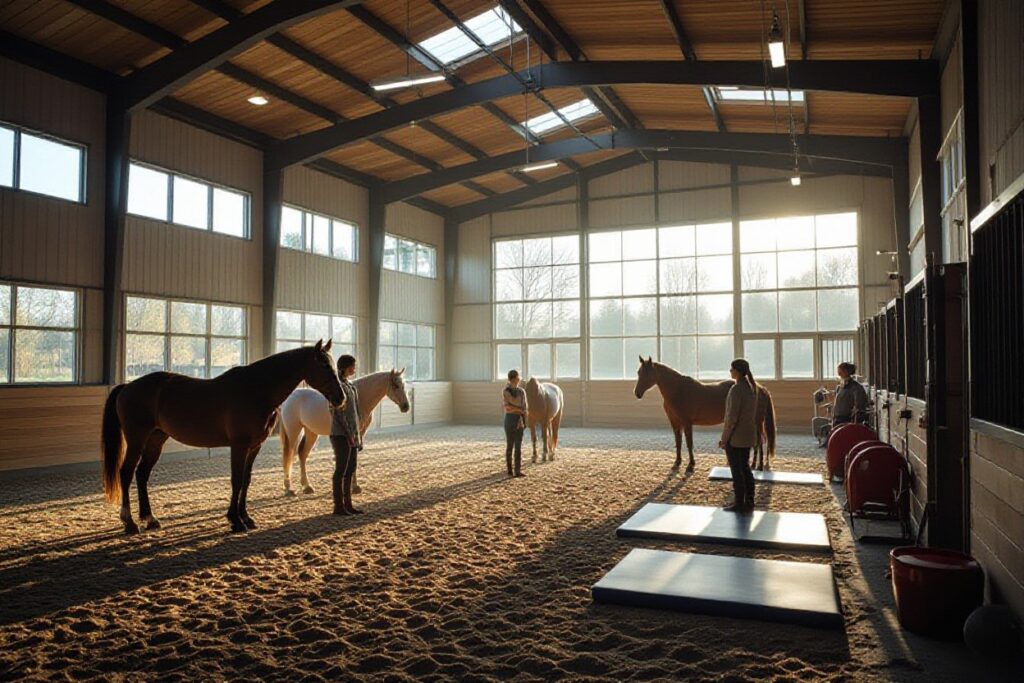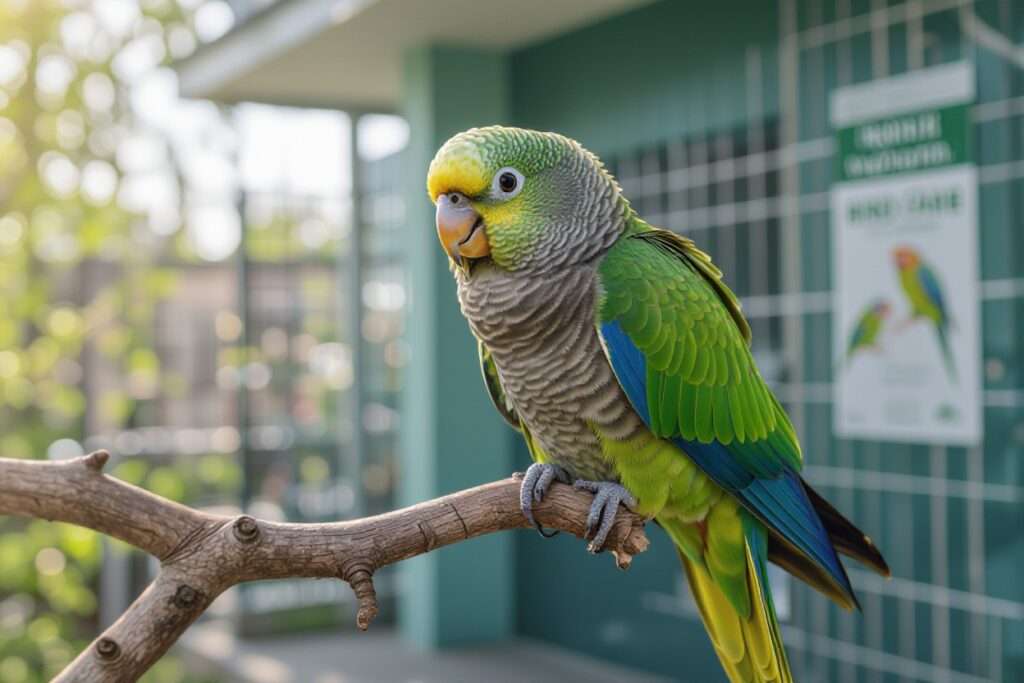Most importantly, knowing how to handle a horse that bites is crucial for your safety and the well-being of the animal. In this guide, you will learn key techniques to prevent and address biting behavior in horses to ensure a positive and safe interaction between you and your equine companion.
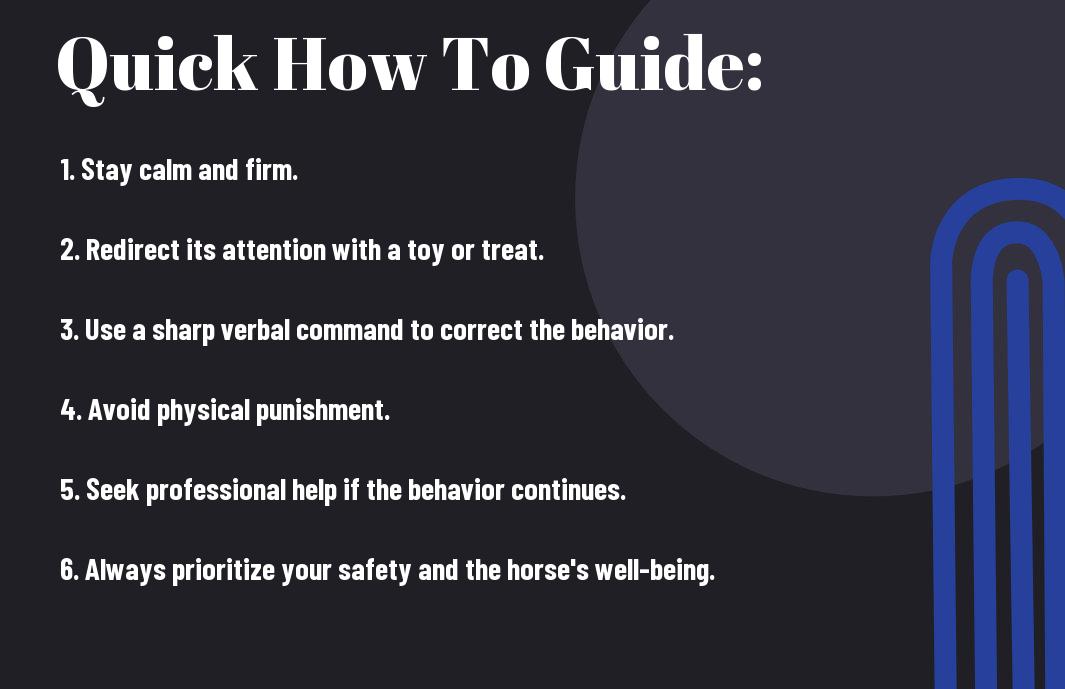
Understanding Why Horses Bite
Fear and Anxiety
With fear and anxiety being common triggers for horse biting, it’s vital to recognize the signs of stress in your horse. Horses may resort to biting as a defense mechanism when they feel threatened or overwhelmed. If your horse is biting out of fear, it’s crucial to create a calm and reassuring environment to help alleviate their anxiety.
Pain and Discomfort
An understanding of potential pain sources can help you address biting behavior stemming from discomfort. Some horses may bite due to physical discomfort caused by ill-fitting tack, dental issues, or underlying health problems. Regular veterinary check-ups and ensuring proper equipment fit can help prevent pain-related biting behavior.
Discomfort from injuries, such as sore muscles or injuries from poorly fitted equipment, can also lead to biting as a response. It’s important to address any physical discomfort promptly to prevent biting behavior.
Dominance and Assertiveness
Clearly defining boundaries and establishing your role as the leader can help manage biting behavior rooted in dominance or assertiveness. Horses are hierarchical animals, and they may resort to biting to assert their dominance over you or other horses. Consistent training and establishing respect through groundwork can help prevent dominant behavior that leads to biting.
Horses may also bite out of frustration or a desire for attention, especially if they have not been properly trained or socialized. By addressing these issues through consistent training and positive reinforcement, you can help redirect their focus and discourage attention-seeking behaviors.
Habituation and Attention-Seeking
While habitual biting can be a learned behavior, attention-seeking can also be a motivating factor. Some horses learn that biting gets them the attention they crave, whether it’s out of boredom or a desire for interaction. Implementing a training regimen with structured activities and positive reinforcement can help redirect this behavior and discourage attention-seeking biting.
Identifying the Warning Signs of Biting
While it’s important to address biting behavior promptly, it’s equally imperative to recognize the warning signs that a horse may be getting ready to bite. By being aware of these signals, you can take proactive steps to prevent an incident from happening.
Body Language Cues
Biting is often preceded by certain body language cues. Watch out for pinned ears, a tense posture, and a swishing tail. These signs indicate that the horse is feeling agitated or anxious, which could lead to a biting response if the situation is not diffused.
Vocalizations and Ear Position
Warning signs can also come in the form of vocalizations and ear position. If a horse starts to squeal, snort aggressively, or flatten its ears back, these are indicators of potential aggression. Ears pinned flat against the head are a clear sign of displeasure and could signal an imminent bite.
Identifying these cues gives you valuable insight into your horse’s state of mind, allowing you to intervene and prevent a biting incident.
Tail Swishing and Raising
With tail swishing and raising, pay attention to the speed and intensity of the movements. A horse that is flicking its tail rapidly or holding it high in the air may be exhibiting signs of irritation or aggression. This behavior can escalate to biting if the underlying cause is not addressed.
Plus, a horse that is swishing its tail or lifting it prominently may also be signaling discomfort or pain. It’s important to rule out any physical issues that could be contributing to this behavior.
Changes in Behavior and Posture
With changes in behavior and posture, be on the lookout for sudden shifts in your horse’s demeanor. If your typically calm and friendly horse becomes tense, starts to pin its ears, or exhibits other aggressive behaviors, it’s imperative to address the situation promptly. These changes could be indicative of underlying issues that need to be resolved to prevent biting incidents.
Tail between the legs, sweating, and an overall stiff posture are all signs that your horse is feeling threatened or uncomfortable. By addressing these changes early on, you can help your horse feel more at ease and reduce the likelihood of biting behavior.
Preventing Biting Incidents
Establishing Clear Boundaries and Respect
Even before you encounter a biting incident, it’s crucial to establish clear boundaries and earn your horse’s respect. Make sure your horse understands that **biting is not acceptable** behavior and will not be tolerated. Consistency is key – always enforce boundaries and correct any signs of aggression immediately.
Providing Adequate Space and Personal Bubble
Boundaries are crucial when it comes to preventing biting incidents. **Give your horse enough space** and respect its personal bubble. Horses can feel threatened or crowded, leading to defensive behaviors like biting. By respecting your horse’s space, you reduce the likelihood of provoking a biting reaction.
Personal space is a concept that applies to horses as well. **Respect your horse’s personal bubble** and avoid invading it without invitation. This shows your horse that you are a considerate and trustworthy handler, reducing the chances of a biting incident.
Avoiding Provocation and Teasing
With horses, it’s critical to avoid any form **of provocation or teasing** that could lead to aggressive behavior like biting. Be mindful of your actions and interactions with your horse. Avoid behaviors that may agitate or upset your horse, leading to potential biting incidents.
The relationship between you and your horse should be built on mutual trust and respect. **Avoid teasing or provoking your horse**, as this can lead to negative reactions such as biting. Always approach your horse with a calm and gentle demeanor to maintain a positive connection.
Rewarding Good Behavior and Desensitization
The best way to prevent biting incidents is to focus on reinforcing **good behavior and desensitization** techniques. Reward your horse for positive behaviors, such as gentle interactions and respectful manners. Additionally, desensitize your horse to triggers that may cause stress or anxiety, reducing the likelihood of defensive biting reactions.
The key to preventing biting incidents lies in **rewarding good behavior and desensitizing** your horse to potential triggers. By creating a positive reinforcement environment and helping your horse overcome its sensitivities, you can build a trusting relationship and minimize the risk of aggressive behaviors like biting.
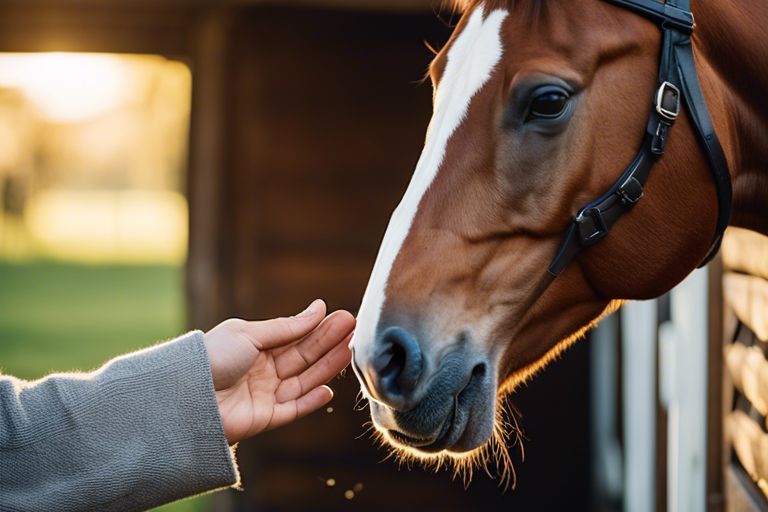
How to React When a Horse Bites
Staying Calm and Assertive
Little do you know, horses can sense your emotions, so it’s crucial to stay calm and assertive when dealing with a biting horse. If your horse bites you, take a deep breath and try not to react out of fear or anger. Instead, use a firm tone and body language to show the horse that this behavior is not acceptable.
Withdrawing Attention and Affection
Calmly withdraw your attention and affection when a horse bites you. Ignoring the horse for a few moments after the incident can help the horse understand that biting will not be rewarded with your affectionate interactions. This method can help the horse associate biting with a lack of attention, which can discourage this behavior.
To effectively withdraw attention and affection, turn your back to the horse and avoid making eye contact or engaging with it for a short period. This sends a clear message to the horse that its actions have consequences and helps reinforce positive behavior.
Using Positive Reinforcement Techniques
Calmly use positive reinforcement techniques to encourage good behavior and discourage biting in horses. When the horse behaves well and refrains from biting, reward it with treats, praise, or a gentle pat on the neck. This positive feedback helps reinforce the idea that not biting leads to positive outcomes and encourages the horse to continue this behavior.
Positive reinforcement can be a powerful tool in training horses and shaping their behavior. By consistently rewarding desirable behavior, you can effectively communicate to the horse what is expected of it and create a trusting and positive relationship.
Seeking Professional Help and Guidance
Clearly, if you are struggling to address your horse’s biting behavior on your own, seeking professional help and guidance is crucial. A professional horse trainer or behaviorist can provide you with valuable insights and techniques to address the issue effectively. They can assess the root cause of the biting behavior and develop a customized training plan to help you and your horse overcome this challenge.
Help from a professional can make a significant difference in resolving behavioral issues in horses and ensure a safe and harmonious relationship between you and your equine companion.
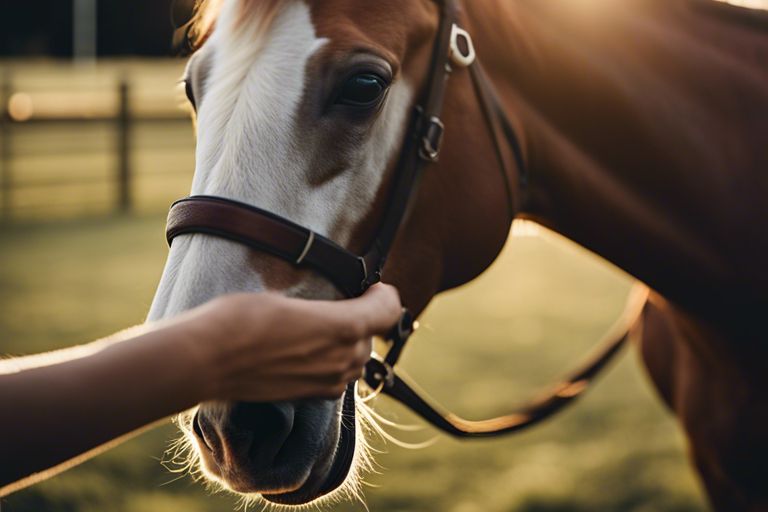
Factors to Consider When Handling a Biting Horse
After identifying that your horse has a biting behavior, there are several factors you should consider when handling them. These factors can help you understand why your horse is biting and how to address this issue effectively.
Breed and Temperament
Handling a horse that bites can be influenced by their breed and temperament. Some horse breeds are known to have more aggressive tendencies, while others may be naturally calmer. Additionally, individual horses‘ temperaments vary, with some being more sensitive or reactive than others. Understanding your horse‘s breed and temperament can help you tailor your approach to training and handling them.
After assessing your horse‘s breed and temperament, you can adjust your handling techniques to suit their specific needs. By taking into account these factors, you can better address the horse‘s biting behavior and work towards resolving it effectively.
Age and Maturity Level
To effectively handle a horse that bites, you must consider their age and maturity level. Younger horses may exhibit biting behavior as part of their learning process or as a way to test boundaries. Older horses may bite due to health issues, discomfort, or behavioral problems. Understanding your horse‘s age and maturity level can help you determine the underlying reasons for their biting behavior.
You may need to approach training and handling differently based on your horse‘s age and maturity level. Younger horses may require more patience and consistent reinforcement of boundaries, while older horses may benefit from addressing any potential health issues or discomfort that could be causing the biting behavior.
Past Experiences and Trauma
Biting behavior in horses can also be influenced by past experiences and trauma. Horses that have been mishandled, abused, or experienced traumatic events in the past may exhibit biting as a response to fear or anxiety. Understanding your horse‘s past experiences can provide insight into their behavior and help you approach training and handling with empathy and patience.
With a horse that has past experiences of trauma, it is necessary to build trust gradually and create a safe environment for them. By establishing a positive and nurturing relationship with your horse, you can help them overcome their fears and anxieties, reducing the likelihood of biting behavior in the future.
Environmental and Social Factors
Experiences in the environment and social interactions can also play a significant role in your horse‘s biting behavior. Factors such as inadequate space, lack of social interaction with other horses, or stressful living conditions can contribute to a horse feeling frustrated or anxious, leading to biting. By addressing these factors, you can create a more harmonious environment for your horse and reduce the likelihood of biting behavior.
- Ensure your horse has enough space to move and exercise
- Provide opportunities for social interactions with other horses
This way, you can help your horse feel more comfortable and secure in their environment, reducing the likelihood of biting behavior.
Factors to Consider in Handling a Biting Horse
When handling a biting horse, it is important to consider their breed and temperament, age and maturity level, past experiences and trauma, as well as environmental and social factors. By addressing these factors and tailoring your approach to your horse‘s specific needs, you can effectively work towards resolving their biting behavior and fostering a positive relationship built on trust and mutual respect.
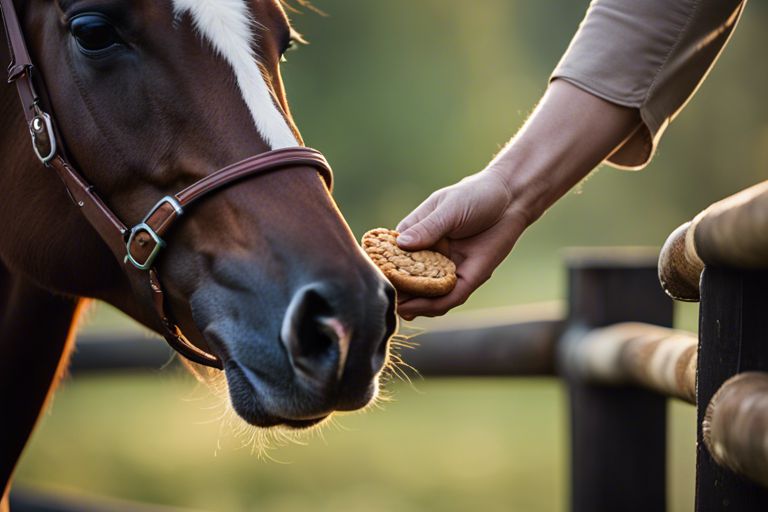
Tips for Safe and Effective Handling
Keep these tips in mind when handling a horse that bites to ensure both your safety and the horse’s well-being:
Wearing Protective Gear and Clothing
There’s nothing more crucial than protecting yourself when dealing with a biting horse. Wear appropriate gear such as a helmet, gloves, and sturdy boots to safeguard against potential bites or kicks. Additionally, make sure your clothing is close-fitting and free of loose ends that could be grabbed by the horse.
Using Gentle and Consistent Communication
Now, it’s time to communicate effectively with the horse to establish boundaries and trust. Avoid aggressive behavior as it can escalate the situation. Instead, use gentle cues such as voice commands and light touches to convey your intentions. Do not forget, consistency is key in your interactions with the horse.
Effective communication involves being patient and understanding the horse’s responses. By observing the horse’s reactions and adjusting your approach accordingly, you can build a positive relationship based on trust and respect.
Maintaining a Safe Distance and Proximity
The key to handling a horse that bites is to always maintain a safe distance. By keeping a respectful space between you and the horse, you reduce the risk of getting bitten or kicked. Avoid standing directly in front of or behind the horse, as these are the most dangerous zones.
Safe handling involves being mindful of your surroundings and staying alert to any signs of aggression from the horse. By maintaining a safe proximity, you can quickly react and prevent any potential biting incidents.
Being Aware of Personal Energy and Body Language
With each interaction, pay attention to your personal energy and body language. Remain calm and assertive to convey confidence to the horse. Avoid sudden movements or displaying fear, as these can trigger a negative response.
Proximity to the horse should be carefully managed, ensuring that you are neither invading its space nor retreating in fear. By maintaining a balanced energy and positive body language, you set the tone for a productive and safe interaction with the horse.
Summing up
The next time you encounter a horse that bites, remember that understanding the reason behind their behavior is key. By addressing any underlying causes, such as pain or discomfort, you can help the horse overcome their biting habit. Consistent training and positive reinforcement will also play a crucial role in correcting this behavior.
Remember to always prioritize your safety when handling a horse that bites. Seek professional help if needed and never hesitate to set boundaries and enforce them firmly but gently. With patience, understanding, and proper training, you can effectively manage a biting horse and build a trusting relationship based on respect and clear communication.
Q: Why does my horse bite?
A: Horses may bite due to a variety of reasons, such as feeling threatened, asserting dominance, seeking attention, pain, or as a learned behavior.
Q: How can I prevent my horse from biting?
A: To prevent biting, establish clear boundaries, provide proper training, ensure the horse is in good health, and consistently reward good behavior.
Q: What should I do if my horse tries to bite me?
A: If your horse tries to bite you, firmly say “no” and immediately move out of their striking range to avoid reinforcing the behavior. Seek professional help if the behavior persists.
Q: Can using treats help stop a horse from biting?
A: Treats can be used as positive reinforcement to encourage good behavior and as a distraction to prevent biting, but it should not be the sole method for addressing biting issues.
Q: How can I address aggressive biting behavior in my horse?
A: Consult with a professional trainer or behaviorist to assess the root cause of the aggression and develop a tailored training plan to address the biting behavior effectively.
